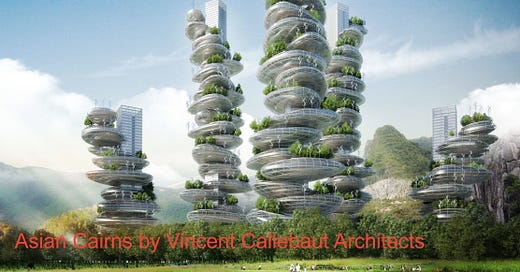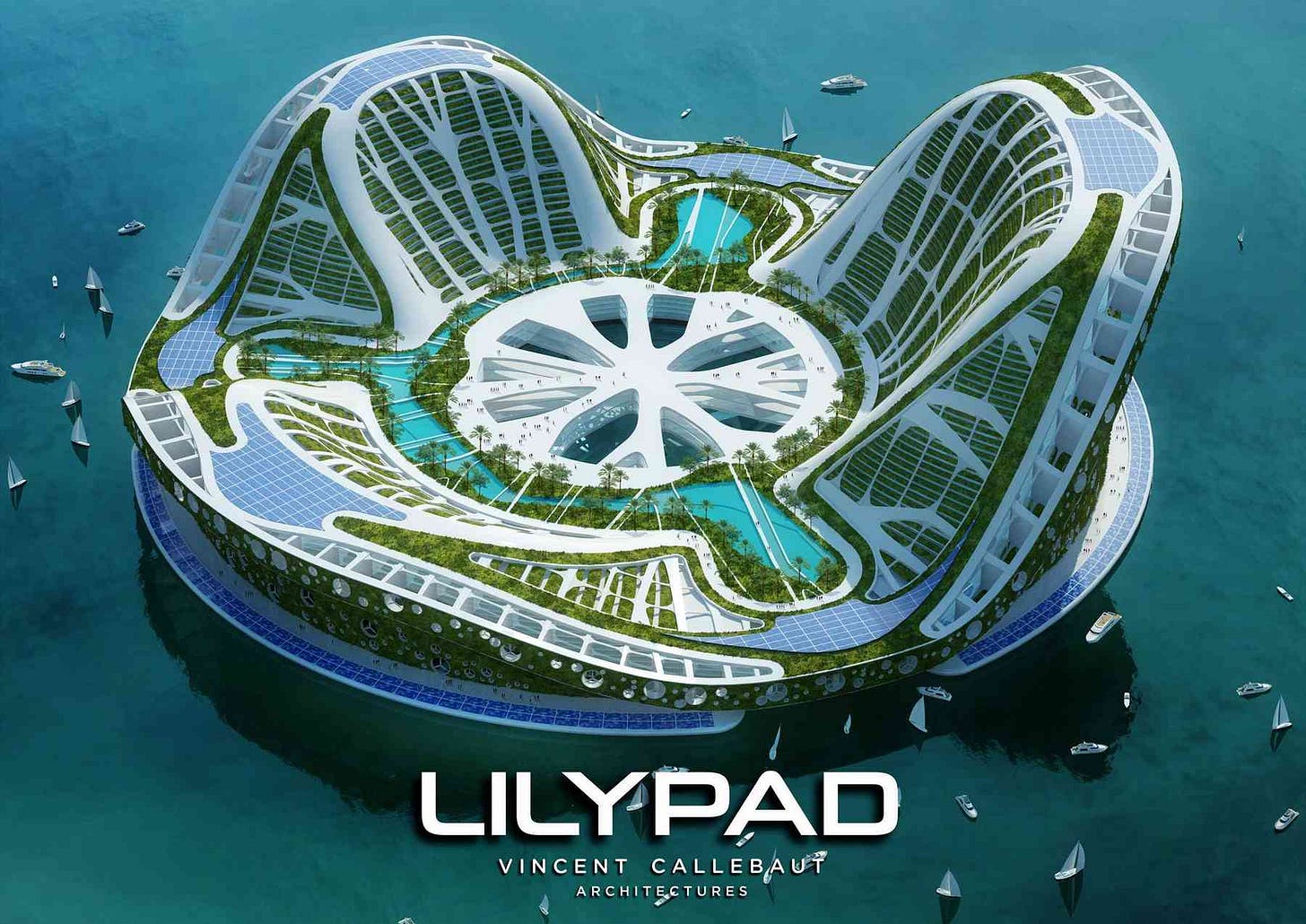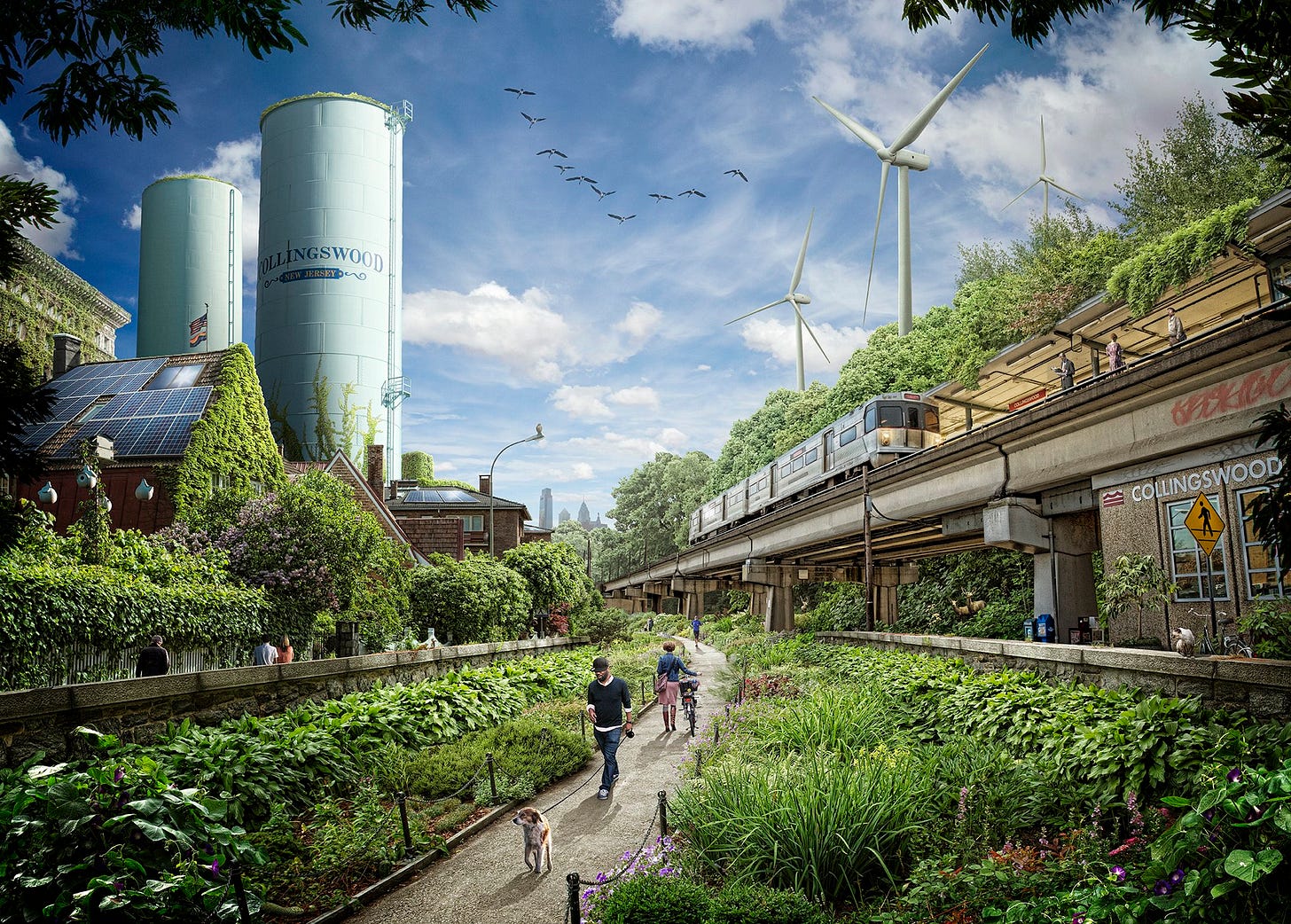Blueprints for solarpunk?
Are architects doing more than sci-fi to champion better futures? Plus our usual round-up of solarpunky stuff
While sci-fi has become overwhelmingly dark in recent decades have architects been better at envisioning brighter futures? This is the question Eric Molinsky explores in a recent episode of his podcast Imaginary Worlds. He interviews Jes Deaver and Liam Young, designers using an architectural lens to speculate about how more sustainable worlds might be built.
Towards the end of the episode Eric mentions how solarpunk is a genre that showcases greener and more desirable futures. One of the interviewees thinks that there is a contradiction regarding popular images of solarpunk buildings.
Liam Young thinks the type of green skyscrapers, like that pictured above, require supply chains and construction methods that for him are not solarpunk. He thinks our genre only allows for super-local sourcing of materials and products. Young argues instead for ‘planetary punk’ which would embrace the idea of collective sustainable action on a global scale.
In our deep-dive What is Solarpunk? One Thing or Many? We described many different shades of our genre. We think that Young has over-identified solarpunk with one shade visually and the hyperlocalist trend economically.
We believe solarpunk can be lower tech than the megastructures of the Metropolis Solar shade. The more rooted shade of solarpunk in architecture can be seen in popular images like the below by Nick Pedersen.
We also think it can involve global supply chains, not least for things that aren’t sustainably produced locally.
The New Economics Foundation book Return to Scale: Alternatives to Globalisation, gives examples of what makes most sense to produce in a greener way locally, regionally, nationally and internationally.
What do you think?
Are architects doing a better job at envisioning sustainable futures than sci-fi creators?
What shade of solarpunk architecture do you like best?
Do you think solarpunk can only be about things sourced hyperlocally or can it involve exchanges with other countries and cultures?
What are your thoughts about the Imaginary Worlds episode in general?
In a previous post we recommended some of Imaginary Worlds other solarpunky epsiodes here if you’d like to check them out.
Links
Solarpunk Artist: We need to imagine the future we want - Joshua Krook
Trevor Noah’s Day Zero Productions unveils Solarpunk Jam with Anima Interactive - Venture Beat
It took us a year to make our solarpunk comic - Sup
Bright Green Futures: 2024 Solarpunk anthology - Susan Kaye Quinn
'Solarpunk' graphic novel set 500 years in Abu Dhabi's future unveiled at Comic Con - MSN
How Refugees are Greening the Edge of the Sahara - Andrew Millison
Check out my threads! The local library where you can borrow a new outfit - Positive News
Help build solarpunk
The main way this newsletter grows is people like you sharing it. Help bring a deliciously sustainable future a little closer by passing this onto anyone you think might enjoy a dose of inspiration.
See you in the sunshine,
Alex Holland
Founder, SolarPunk Stories








Another issue filled with great content and links.
I tend to lean towards "appropriate tech" instead of "high tech." I see BioRegional circular economies being incredibly important for the majority of our goods and production. Tech got us into this problem, I don't see it saving us. We have all the tech we need. SolarPunk praxis is about taking what we have to build dual power and restore balance.